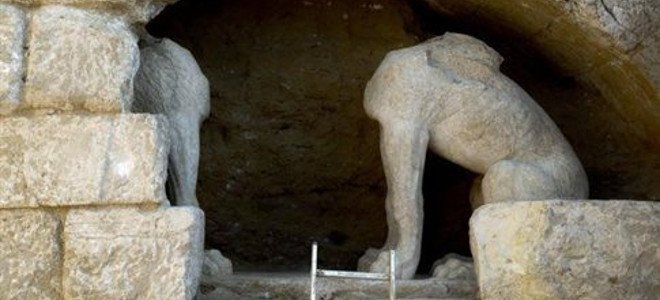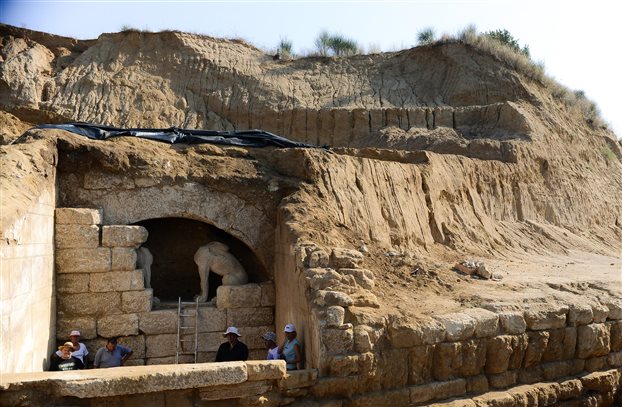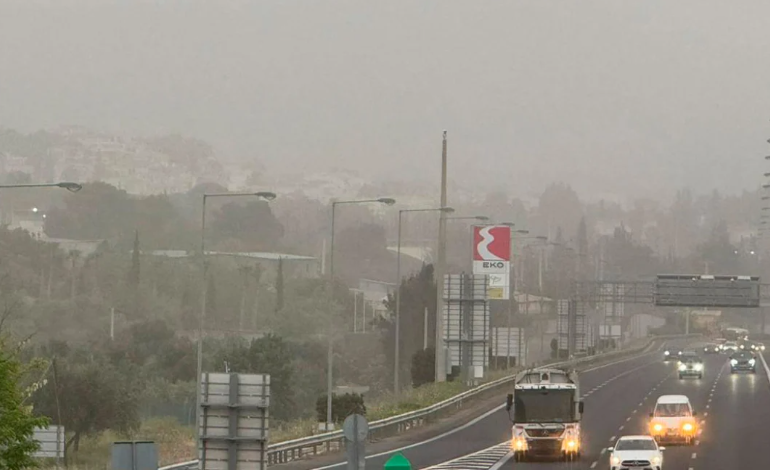Archaeologists at ancient Amphipolis are resorting to the use of high technology for the first time in the opening of the mysterious tomb excavated. Work that commenced this morning focused on opening the 2,300-year-old wall that blocks the entrance to the tomb as a means of protecting it from looters.
Decay has set in and archaeologists are worried that the wall, created from limestone, may become brittle if there is water in the tomb or if the weight of the stone structures over the burial mound force the area to cave in. For either of these reasons, some of the stones from the lower rows of the protective wall have been crushed and there is fear that the tons of earth held in place may cave in once the wall is removed. To avoid any safety hazards, archaeologists are considering using small forklifts.
Archaeologists have refuted reports that cranes have been called in to remove the bodies of the two headless sphinxes-lions guarding the tomb. The group of experts are using a special crane to detach the marble plates in front and next to the Sphinxes, which are estimated to weigh half tonne each.
Archaeologists hope to find mythical wealth in the tomb bearing in mind the gold mine in the area and the era of history during which the burial mound was created, soon after Alexander the Great’s victorious campaign to the East.
There are fears that the tomb may have been looted. Lead archaeologist Katerina Peristeri reportedly managed to use a microcamera to look inside the tomb from a slight slit and is believed to have detected faces on a metal roof and also noted backfilling causing concern as to whether looters had already entered, according to To Vima tis Kyriakis.





































